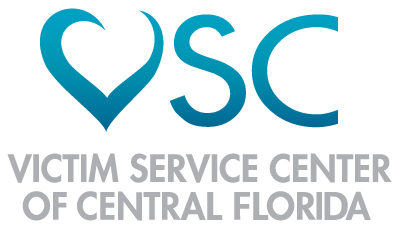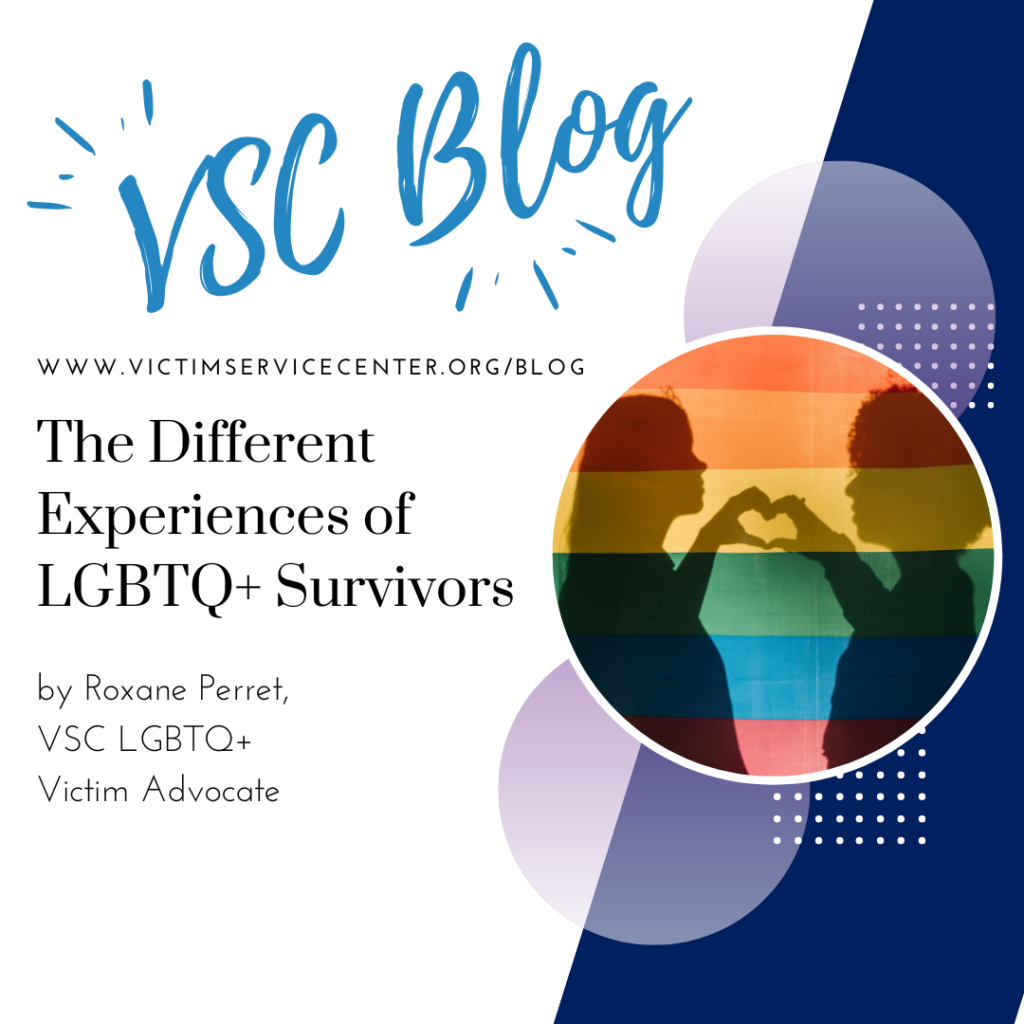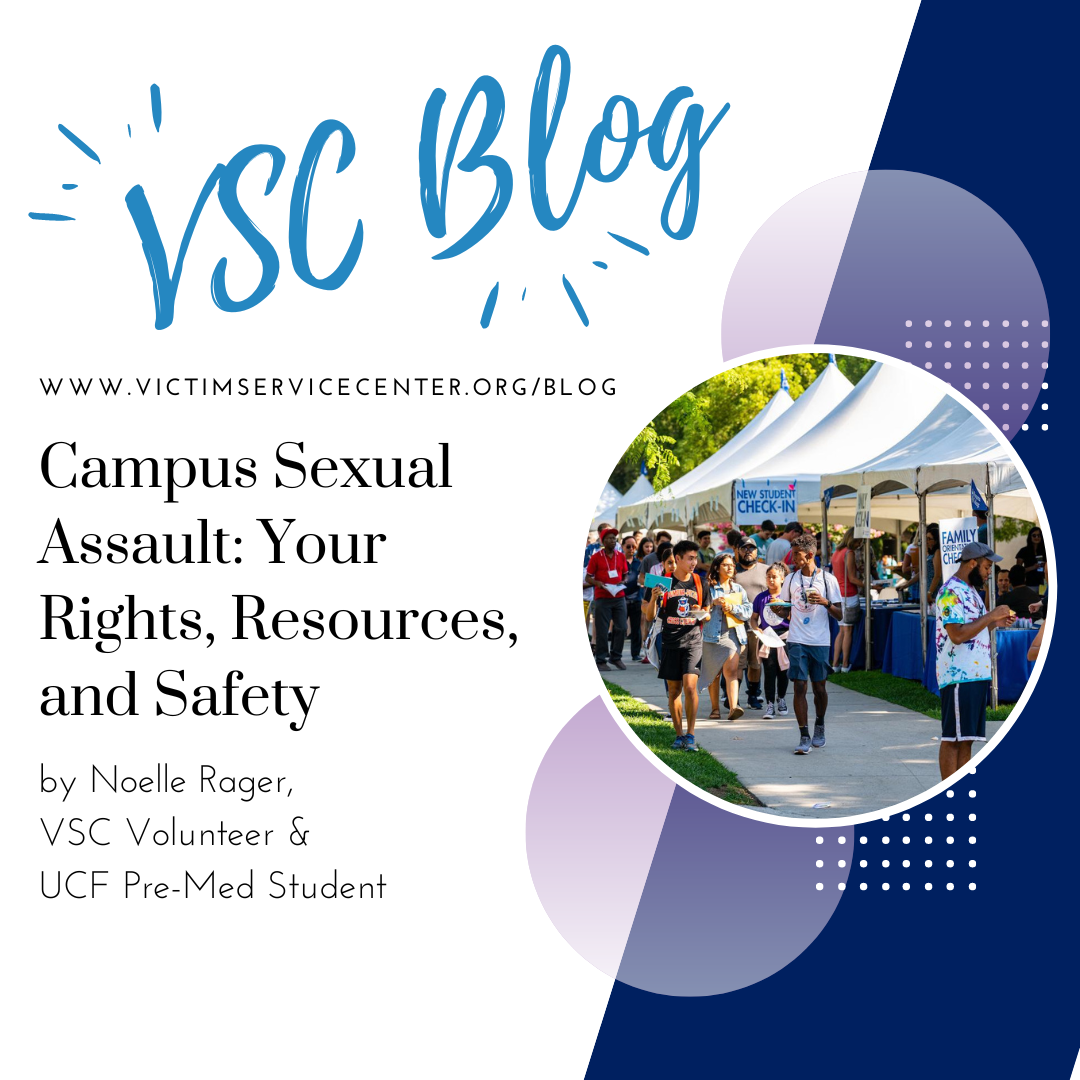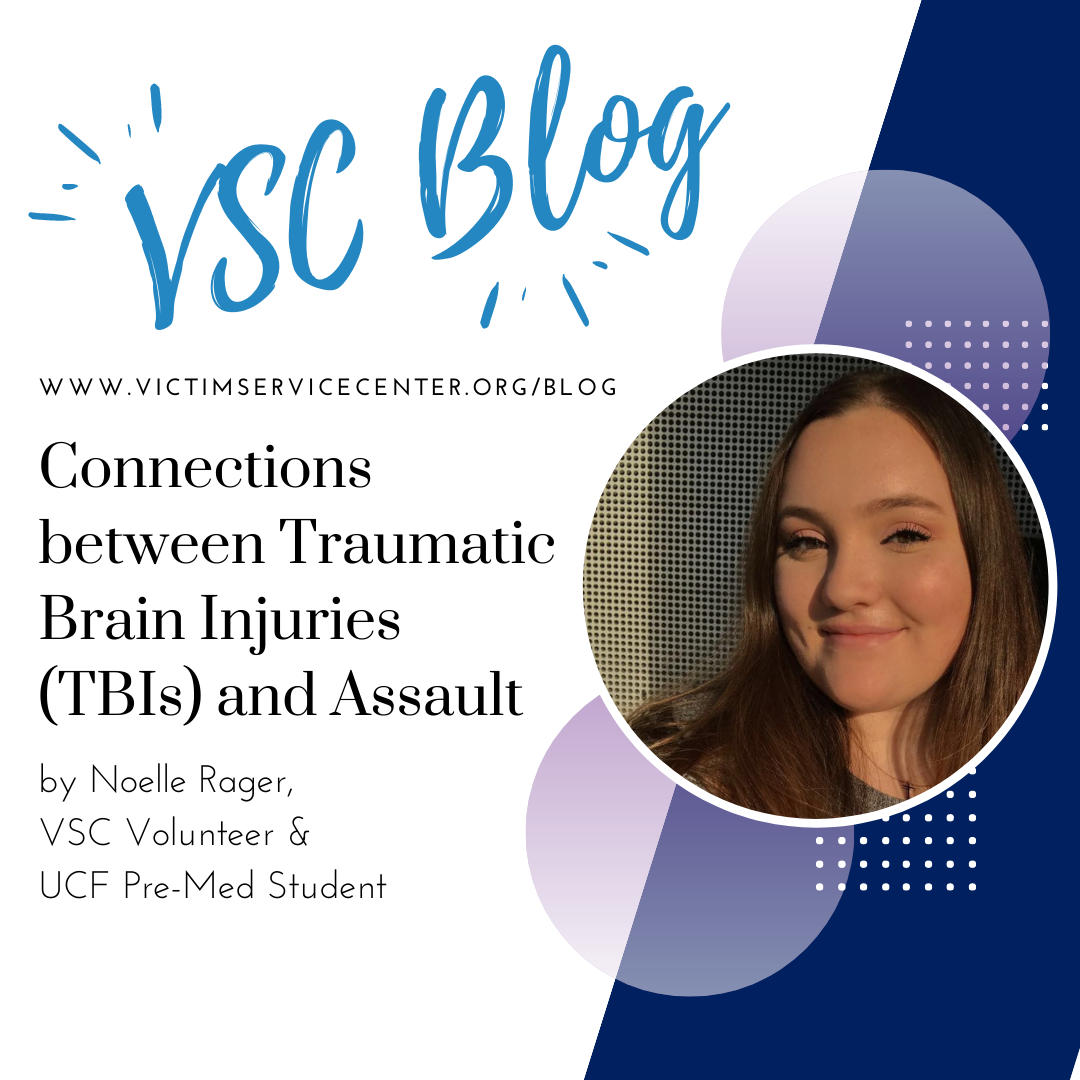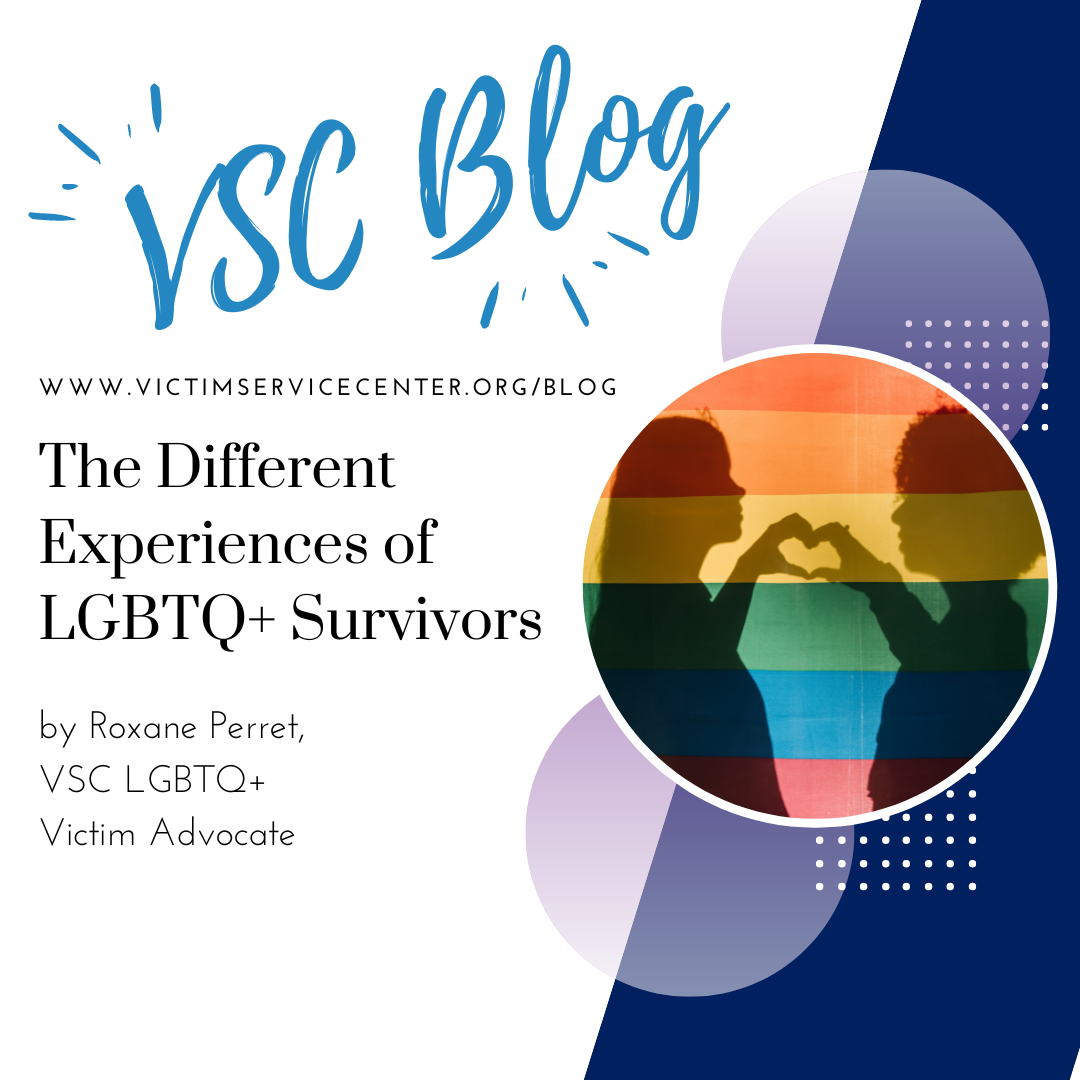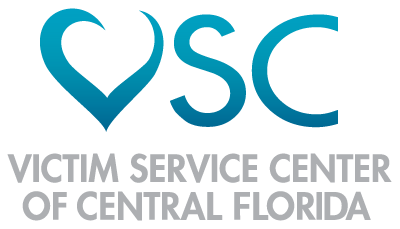By Roxane Perret, VSC LGBTQ+ Victim Advocate
LGBTQ+ is an umbrella term that encompasses many identities. All of those identities are important and they all carry their own different experiences. People that hold those different identities are often victimized in different ways.
It’s important to uplift and bring awareness to those specific experiences in order to validate the experiences of survivors.
According to the National Survey of Intimate Partner and Sexual Violence, conducted by Waiters et al in 2013, Bisexual women, had a significantly higher lifetime prevalence of rape and sexual violence other than rape by any perpetrator when compared to both lesbian and heterosexual women.¹
A specific sexual violence phenomenon that commonly affects lesbian women is corrective rape. Corrective rape is when lesbian women are sexually assaulted by men in order to “correct” their homosexuality.
The prevalence of rape over a lifetime for men is:
- – Gay – numbers are too small
- – Bisexual – numbers are too small
- – Heterosexual – 0.7%¹
However, these numbers are due to gay and bisexual men facing an increased number of barriers when reporting sexual assault. These barriers include:
- “Why didn’t you fight back?”
- Fear of being discriminated against when reporting
- Expected masculinity
- Fear of being told they “wanted it” because they are attracted to men.
According to the 2015 U.S. Transgender Survey, almost 50% of trans, non-binary, gender nonconforming individuals report having experienced sexual violence in their lifetime.²
Sexual violence victimization is much more prevalent in trans individuals that are also black, indigenous, and people of color. Out of the 47% that indicated having been sexually assaulted, 65% identified as Native American, 59% were multi-racial, 58% were middle eastern, and 53% were Black.²
There are also many identities that fall under the transgender umbrella, as transgender is anyone that identifies as something other than the gender they were assigned at birth so not only does that include trans women, trans men but also non-binary people and gender non-confirming identities. However, there is not enough research regarding their experiences of sexual violence, but their experiences are still valid.
Intersex people often experience something known as medicalized rape. From a young age, they are taught their genitals must look a certain way in order to fit within the binary of male or female sex, so medical professionals often perform surgery on them during their youth. As they get older, intersex people often regret these surgeries, as they come to terms with their intersex bodies, and realize that this surgery was done without their consent. An example of one of those surgeries is known as vaginoplasty, which is basically dilation of the vagina if they are deemed not too deep enough for penetration. Intersex children are sometimes required to have genital examinations, to see whether the surgeries were successful. This is a form of sexual abuse that many intersex people have to endure as children.
A recent survey from European Union Agency for Fundamental Rights (FRA) found that 22%of intersex respondents have experienced physical or sexual assault.³
Our society is often sexually-driven, this makes it incredibly hard for asexual individuals to be accepted and it makes them often victims of sexual violence. A phenomenon mentioned as corrective rape is also experienced by asexual people. Their asexuality is often viewed as not normal and something that must be fixed through corrective rape. According to the 2015 Asexual Census, 43.5% of 8,000 asexual people surveyed reported having experienced sexual violence such as rape and coercion.⁴
Sources:
¹Walters, M.L., Chen J., & Breiding, M.J. (2013). The National Intimate Partner and Sexual Violence Survey (NISVS): 2010 Findings on Victimization by Sexual Orientation. Atlanta, GA: National Center for Injury Prevention and Control, Centers for Disease Control and Prevention.
²James, S. E., Herman, J. L., Rankin, S., Keisling, M., Mottet, L., & Anafi, M. (2016). The report of the 2015 U.S. Transgender Survey. Retrieved from the National Center for Transgender Equality: https://www.transequality.org/sites/default/files/docs/USTS-Full-Report-FINAL.PDF
³European Union: European Agency for Fundamental Rights, The fundamental rights situation of intersex people, May 2015, FRA Focus 04/2015, available at: https://www.refworld.org/docid/5551c3524.html [accessed 2 May 2022]
⁴Bauer, C., Miller, T., Ginoza, M., Chiang, A., Youngblom, K., Baba, A., Pinnell, J., Penten, P., Meinhold, M., Ramaraj, V. (2017). The 2015 Asexual Census Summary Report. Retrieved from https://asexualcensus.files.wordpress.com/2017/10/2015_ace_census_summary_report.pdf
